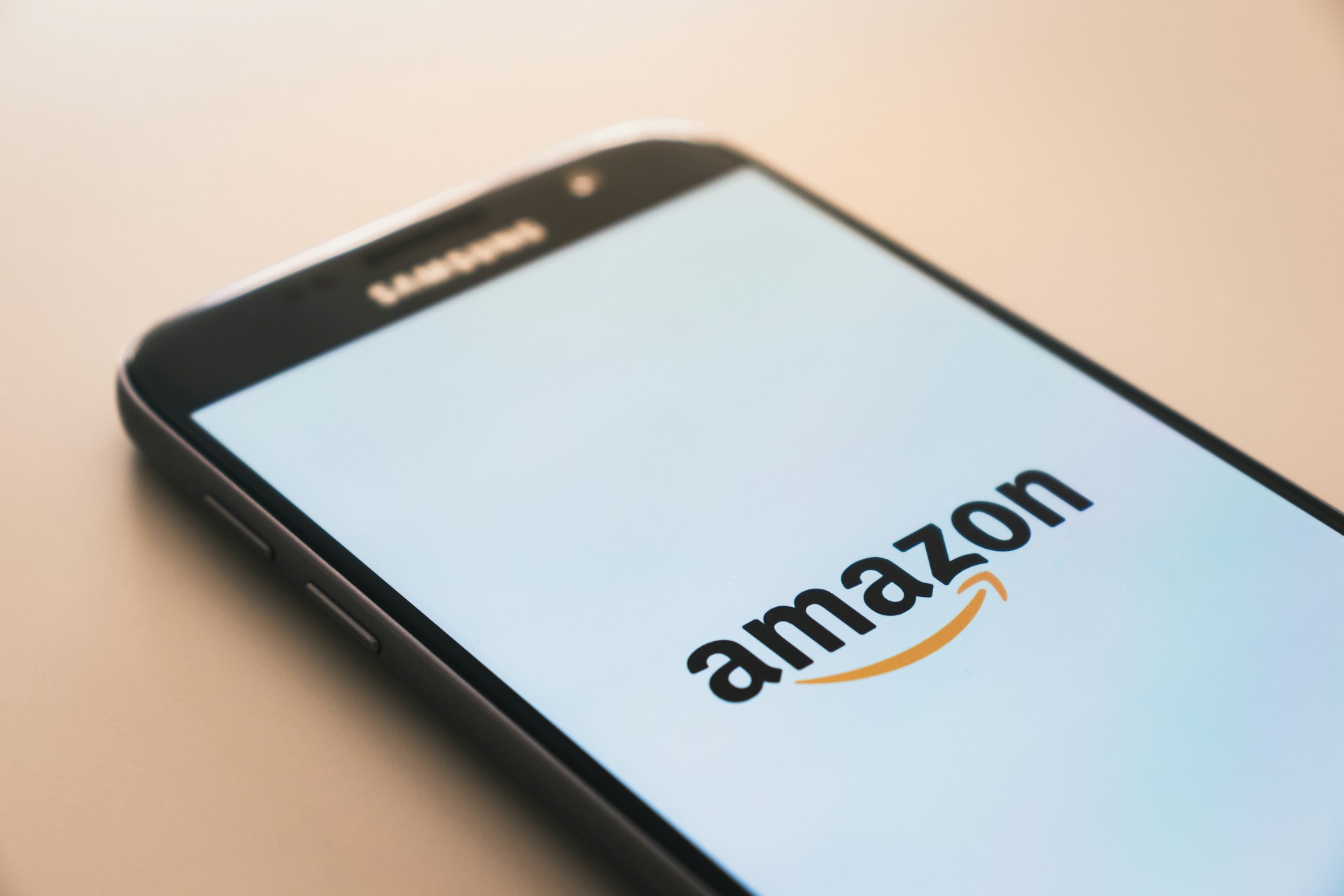Amazon has been lending capital to small businesses since 2011. The lending segment grew and gave out billions of dollars to independent sellers yearly. Although Amazon Lending has been around for a while and has helped many merchants, the company decided to shutter the program. This guide will briefly cover Amazon Lending and discuss some of the alternatives.
What is Amazon Small Business Lending?
Amazon Small Business Lending makes capital more accessible for small business owners who list their products on Amazon. The tech giant makes money from interest, and some of that money goes right back to the business through Amazon PPC campaigns.
The program helped eligible U.S. small and medium-sized businesses access more capital. It only took a few minutes to apply for the invite-only program. Amazon offered transparent costs and did not require a credit check. The e-commerce corporation also offered quick access to funding.
Customers could choose from many options. Term loans, business lines of credit, and merchant cash advances were popular choices. You had to sign into your Seller Central account to complete the online application process.
Can You Still Get Small Business Loans through Amazon Lending?
Amazon recently announced that it is no longer offering small business loans. Although many merchants have used this resource in the past, it is no longer available, and merchants who used the program in the past can no longer take out new loans with Amazon’s assistance.
What Will Happen to the Active Small Business Loans in Amazon Lending?
You still have to pay back your loan if you received one from Amazon. Merchants must repay these loans as specified in the terms. In other words, if you have one year to make payments, you have to pay it off within that amount of time. Amazon isn’t rug-pulling any business owner with an existing loan by demanding immediate payment. Small businesses with active Amazon loans cannot apply for a new Amazon loan. The company is done with underwriting loans.
Alternatives to Amazon Small Business Lending for eCommerce Sellers
Luckily, Amazon Small Business Lending isn’t the only way to get the capital you need for your small business. eCommerce sellers can consider these alternatives.
Revenue Based Financing
Revenue-based financing offers more flexibility than other types of funding. You will receive a lump sum right away and have to make monthly payments equal to a percentage of your company’s gross revenue. You will end up with a lower payment if your business doesn’t perform as well, which can minimize the risk of running into cash flow issues.
Pros:
- Flexible repayment plan
- You may not need to show your credit score to get funding
- You can receive capital quickly
Cons:
- Growing your business will result in higher monthly payments.
- Applicants must fulfill the minimum annual gross revenue requirement.
- You can end up paying far more than the loan’s amount if your company’s revenue significantly increases during the loan’s term.
Typical loan amount and terms:
- You have to pay 2% to 10% of gross monthly revenue
- $25,000 to $10 million
Common Requirements and Qualifications:
- Credit score requirement in some cases
- Minimum annual gross revenue
SBA Microloans
An SBA microloan has a quicker approval time than the more popular 7(a) SBA loans. Microloans have maximum loan amounts of $50,000. The maximum repayment term is six years.
Pros:
- Monthly payments are fixed and predictable
- Competitive rates and terms
- Quicker to receive than traditional SBA loans
Cons:
- Lenders have more requirements for these loans than most types of financing
- Not every business should use a structure that adds a fixed monthly expense
- You can only borrow up to $50,000
Typical loan amount and terms:
- Up to six years
- Up to $50,000
Common Requirements and Qualifications:
- Debt service coverage ratio
- At least 1-2 years of business experience
- Minimum annual gross revenue
- A good credit score
Personal Loans
You don’t have to get a business loan to grow your business. A personal loan can work just fine since you can use the funds for any purpose. Personal loans can be easier to get for business owners with excellent personal credit scores who don’t have as much to show for their business credit scores. Terms and rates vary based on your credit score and debt-to-income ratio, among other factors.
Pros:
- Monthly payments are fixed and predictable
- Competitive rates and terms
- You don’t need good business credit to get this loan
Cons:
- Lenders have more requirements for these loans than most types of financing
- Lenders will consider your personal credit score, which isn’t good for low-credit borrowers
- This personal loan can limit your ability to borrow money for personal expenses in the future until you pay it back
Typical loan amount and terms:
- 1-7 years
- Varies, but the amount may range from $50,000 to $100,000, depending on the lender
Common Requirements and Qualifications:
- Debt-to-income ratio
- A good credit score
Peer-to-peer Business Loans
Peer-to-peer business loans can help eCommerce store owners raise money from multiple business owners. This financing option can help people who can’t receive financing from financial institutions. However, raising enough funds with these loans can take a while.
Pros:
- Get funding even if banks and credit unions don’t want to work with you.
- Connect with business owners.
- Participating in this business model can open the opportunity for you to lend money in the future and receive a return on your investment.
Cons:
- It takes a while to raise enough funds
- You still have to fulfill some credit score requirements
- Term lengths can be very short
Typical loan amount and terms:
- 6 months to 5 years
- Varies, but the amount may range from $1,000 to $40,000, depending on the platforms
Common Requirements and Qualifications:
- Debt-to-income ratio
- A good credit score
Invoice Financing
Invoice financing is a funding method that lets you tap into your unpaid invoices. The financing company will give you a percentage of your invoice’s face value. Then, the lender receives the invoice payment when you collect it from the customer. This arrangement still allows you to reach out to the customer and request payment. This distinction is a pro or a con, depending on how you look at it.
Pros:
- Get funding even if banks and credit unions don’t want to work with you.
- You can get capital even if you have a bad credit score.
- Some businesses value being able to communicate with customers and maintain good relationships while accessing their invoices early.
Cons:
- You receive less than the invoice amount when you receive a payment
- You are still responsible for receiving a payment from the customer
- Term lengths can be very short
Typical loan amount and terms:
- 12-24 weeks, depending on the lender
- A percentage of the invoice amount plus fees
Common Requirements and Qualifications:
- The customer must have good credit
- At least one outstanding invoice
Business Lines of Credit
Business lines of credit allow you to receive a lump sum. You only pay interest if you borrow against the credit line. Monthly minimum payments are generous during the draw period, and any remaining balance gets converted into a traditional loan after the drawing period concludes.
Pros:
- Low payments in the beginning
- Competitive rates and terms
- Revolving credit means you can borrow from it again after you have repaid the balance
Cons:
- You will end up with a loan after the drawing period
- Variable interest rate
- Tough qualification standards
Typical loan amount and terms:
- 1-5 years
- $5,000 to $500,000
Common Requirements and Qualifications:
- Debt service coverage ratio
- At least 1-2 years of business experience
- Minimum annual gross revenue
- A good credit score
Business Term Loans
Business term loans have fixed interest rates and monthly payments. Opting for a longer term will minimize your monthly payments, but they will stay constant for the loan’s duration. This model results in predictable monthly payments but can be challenging for eCommerce businesses during slower months.
Pros:
- Monthly payments are fixed and predictable
- Competitive rates and terms
- Improve your credit with on-time payments
Cons:
- Lenders have more requirements for these loans than most types of financing
- The time to receive capital is longer than average
- Not every business should use a structure that adds a fixed monthly expense
Typical loan amount and terms:
- 3-10 years
- $250,000 to $1 million
Common Requirements and Qualifications:
- Debt service coverage ratio
- At least 1-2 years of business experience
- Minimum annual gross revenue
- A good credit score
Find a Financing Solution for eCommerce Since Amazon Lending is Discontinued
Amazon Lending has been a foundational funding resource for many Amazon Businesses. However, your eCommerce business can still tap into funding through the alternatives discussed earlier. Comparing the different financial products and understanding your current finances can help you make a better decision.
Borrowers should apply for multiple loans so they can compare rates and terms from multiple offers. Going with the first loan you find can result in extra expenses. Getting the capital you need can help you grow your eCommerce store, ensure inventory is always available, and reach new sales milestones.







